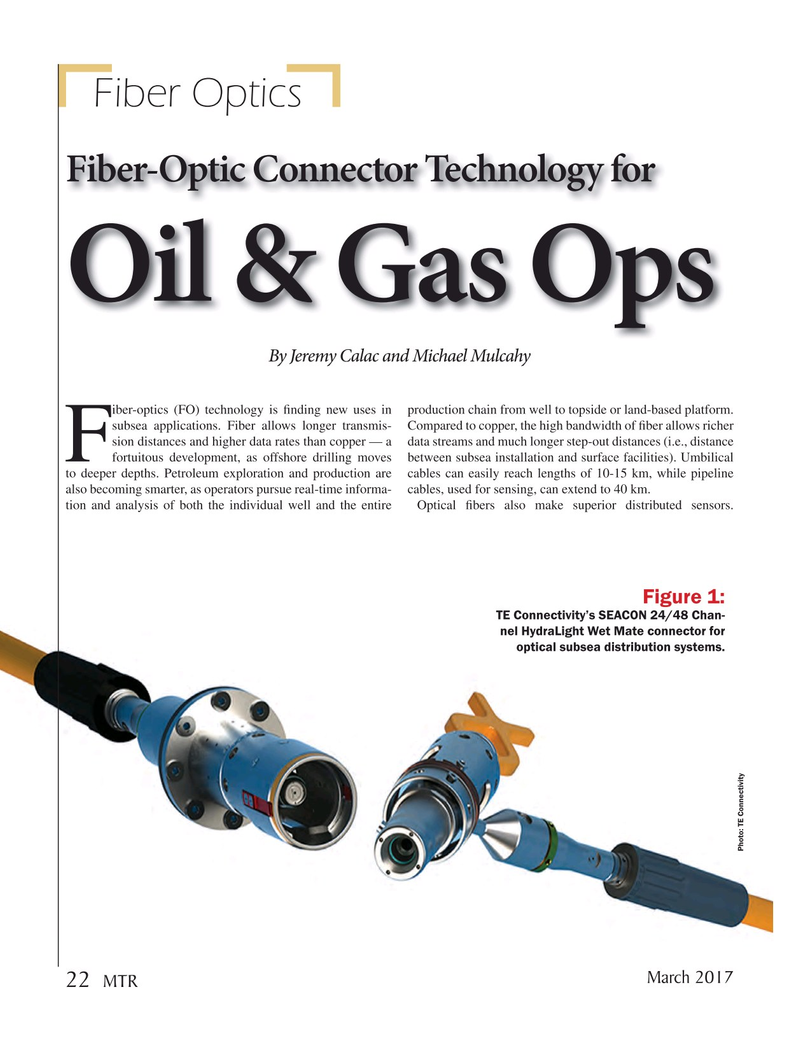
Page 22: of Marine Technology Magazine (March 2017)
Oceanographic Instrumentation: Measurement, Process & Analysis
Read this page in Pdf, Flash or Html5 edition of March 2017 Marine Technology Magazine
Fiber Optics
Fiber-Optic Connector Technology for
Oil & Gas Ops
By Jeremy Calac and Michael Mulcahy iber-optics (FO) technology is ? nding new uses in production chain from well to topside or land-based platform. subsea applications. Fiber allows longer transmis- Compared to copper, the high bandwidth of ? ber allows richer sion distances and higher data rates than copper — a data streams and much longer step-out distances (i.e., distance
Ffortuitous development, as offshore drilling moves between subsea installation and surface facilities). Umbilical to deeper depths. Petroleum exploration and production are cables can easily reach lengths of 10-15 km, while pipeline also becoming smarter, as operators pursue real-time informa- cables, used for sensing, can extend to 40 km.
tion and analysis of both the individual well and the entire Optical ? bers also make superior distributed sensors.
Figure 1:
TE Connectivity’s SEACON 24/48 Chan- nel HydraLight Wet Mate connector for optical subsea distribution systems.
Photo: TE Connectivity
March 2017 22 MTR
MTR #2 (18-33).indd 22 MTR #2 (18-33).indd 22 3/2/2017 2:29:47 PM3/2/2017 2:29:47 PM

 21
21

 23
23
